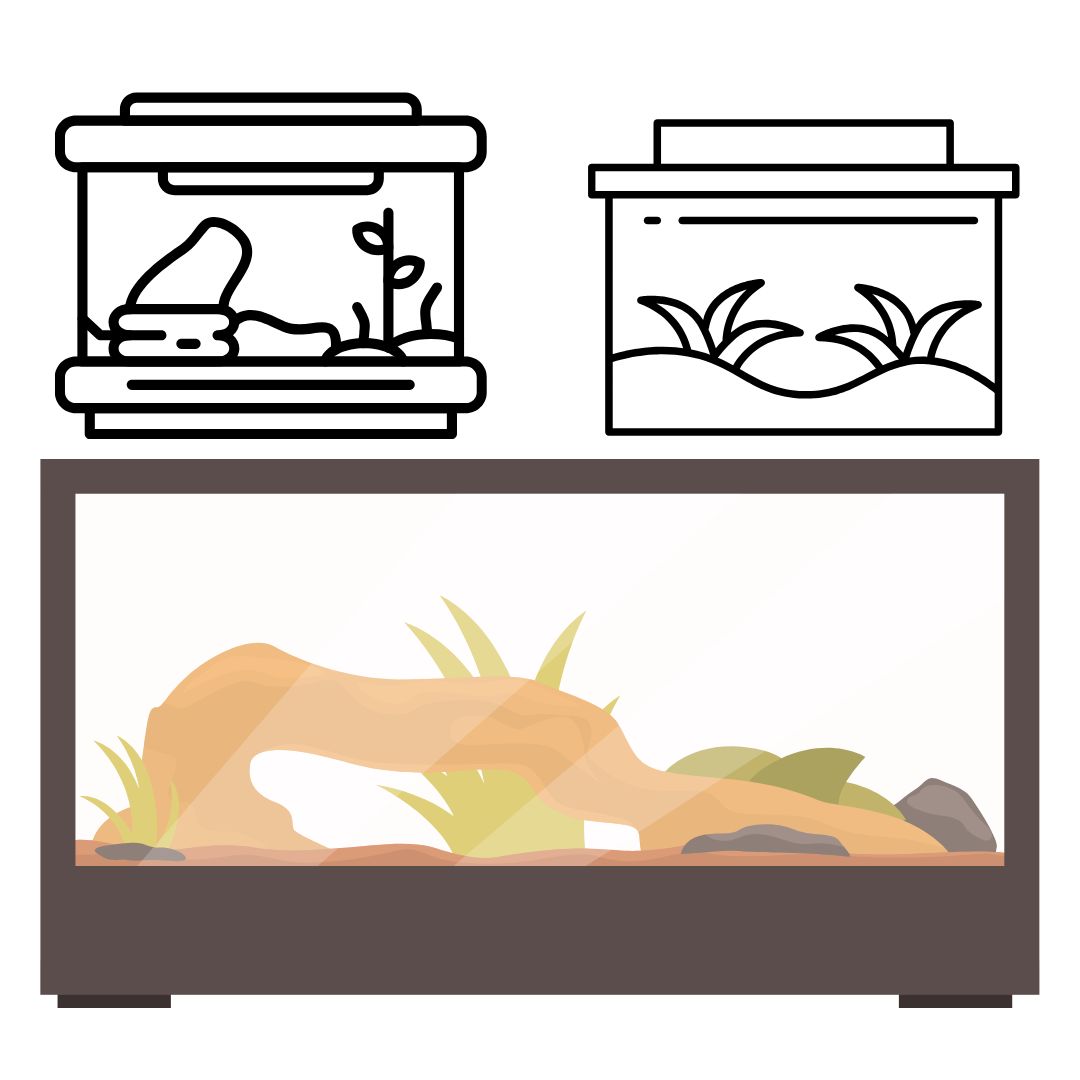Spring & Summer Care Tips for Reptiles
25th Mar 2025
Spring and Summer Care Tips for Reptiles: Keeping Your Scaly Friends Happy and Healthy
As the weather warms up, it's important to adjust your reptile care routine to ensure your pet stays healthy and comfortable throughout the spring and summer months. From regulating temperatures and humidity to providing outdoor opportunities, here's your ultimate guide to seasonal care for reptiles during the warmer months.
1. Increased UVB Exposure: Let the Sunshine In
As days get longer, your reptile’s need for UVB light becomes even more important. UVB helps reptiles synthesize vitamin D3, which is crucial for their calcium absorption and overall bone health. In the spring and summer months, natural sunlight becomes an excellent source of UVB.
-
Enclosure UVB Light: If you can't take your reptile outside for natural sun, make sure their enclosure is equipped with a high-quality UVB light. Depending on the species, the light should be on for about 10-14 hours a day.
-
Outdoor Time: When the weather is nice, and if it’s safe to do so, you can bring your reptile outdoors. Ensure the area is secure and free from predators, and never leave your reptile outside unattended. A shaded area with plenty of space to roam is ideal for species like turtles and certain lizards.
2. Managing Heat: Keep Your Reptile Comfortable
As temperatures rise, it’s essential to manage heat levels in your reptile’s enclosure. Too much heat can cause stress, dehydration, and even heatstroke, so it’s vital to monitor their environment carefully.
-
Provide Shaded Areas: While reptiles are cold-blooded and love basking in the sun, they also need shaded spots to retreat to when they need to cool off. In their enclosures, create both hot and cool zones using heat lamps or ceramic heat emitters.
-
Monitor the Temperature: Keep an eye on the temperature throughout the day. Most reptiles require a temperature gradient with a basking spot at around 90-100°F (32-38°C) and cooler areas in the mid-70s to 80°F (24-27°C). Use a thermometer to check these zones regularly.
-
Cooling Systems: For reptiles that live in warmer environments, consider adding cooling fans or air conditioning to prevent overheating. Humidity can also be affected by heat, so it’s important to monitor that as well (more on that in the next section).
3. Hydration: Keep Them Hydrated
Spring and summer can lead to increased activity and thirst for many reptiles. Hotter temperatures make them more likely to drink more water, so make sure fresh water is available at all times.
-
Increase Watering: Reptiles may drink more frequently in the heat, so be sure to change their water daily. Consider using a larger water dish to accommodate their needs.
-
Misting: Some reptiles, especially those from tropical environments, may also need extra humidity. Misting the enclosure with water can help provide additional hydration and maintain a comfortable environment. Just be sure not to create excess humidity for species that need dry conditions.
-
Humidifiers: If the air is dry, especially in areas with hot summers, consider using a reptile-safe humidifier to maintain the appropriate moisture levels in the habitat.
4. Outdoor Time: Let Them Explore (Safely)
For some reptiles, spending time outdoors can be a beneficial way to get natural sunlight and exercise. However, outdoor adventures require extra attention to safety.
-
Secure Outdoor Enclosures: If you choose to take your reptile outside, make sure their enclosure is secure, escape-proof, and well-shaded. Many reptile species are vulnerable to predators, and others, like turtles, could wander off if not carefully contained.
-
Supervised Playtime: Never leave your reptile unattended outside. Even in secure enclosures, make sure you monitor their time outdoors to ensure they’re comfortable and safe.
-
Watch for Stress: Not all reptiles enjoy being outside. Be aware of signs of stress, such as hiding or excessive basking, which may indicate that your reptile prefers the security of their indoor environment.
5. Parasite Control: Stay Vigilant
Warmer weather means increased chances of encountering external parasites such as mites, ticks, and other pests. Be vigilant about checking your reptile regularly for signs of parasites.
-
Regular Inspections: Check your reptile for visible signs of mites, ticks, or fleas. These pests can cause serious harm if left untreated.
-
Treating Parasites: If you do find parasites, consult your veterinarian for safe and effective treatment options. Always treat your reptile’s enclosure, including all furnishings and decor, to eliminate any potential pests.
6. Feeding Adjustments: Keep an Eye on Appetite Changes
With the change in seasons, your reptile’s eating habits may fluctuate. Reptiles are ectothermic, meaning their metabolism is directly tied to the temperature of their environment, so warmer weather may cause them to eat more or less.
-
Monitor Eating Habits: In the warmer months, some reptiles may become more active, leading to an increased appetite. Others may eat less, especially if they’re brumating (a type of hibernation). Always make sure the food you provide is appropriate for their species and age.
-
Seasonal Foods: Consider offering seasonal foods that are rich in nutrients. For example, fresh leafy greens for herbivores or high-quality insects for carnivores.
Conclusion: Spring and Summer Are a Time for Growth and Fun
With the right care, spring and summer can be a time of great activity and well-being for your reptile. By increasing UVB exposure, adjusting heat levels, ensuring proper hydration, and taking safety precautions when outdoors, you can help your pet thrive during the warmer months.
Remember, every reptile species has unique needs, so it’s important to research your specific pet’s requirements. With these seasonal care tips, you’ll keep your reptile healthy, happy, and ready for the warmer days ahead!




